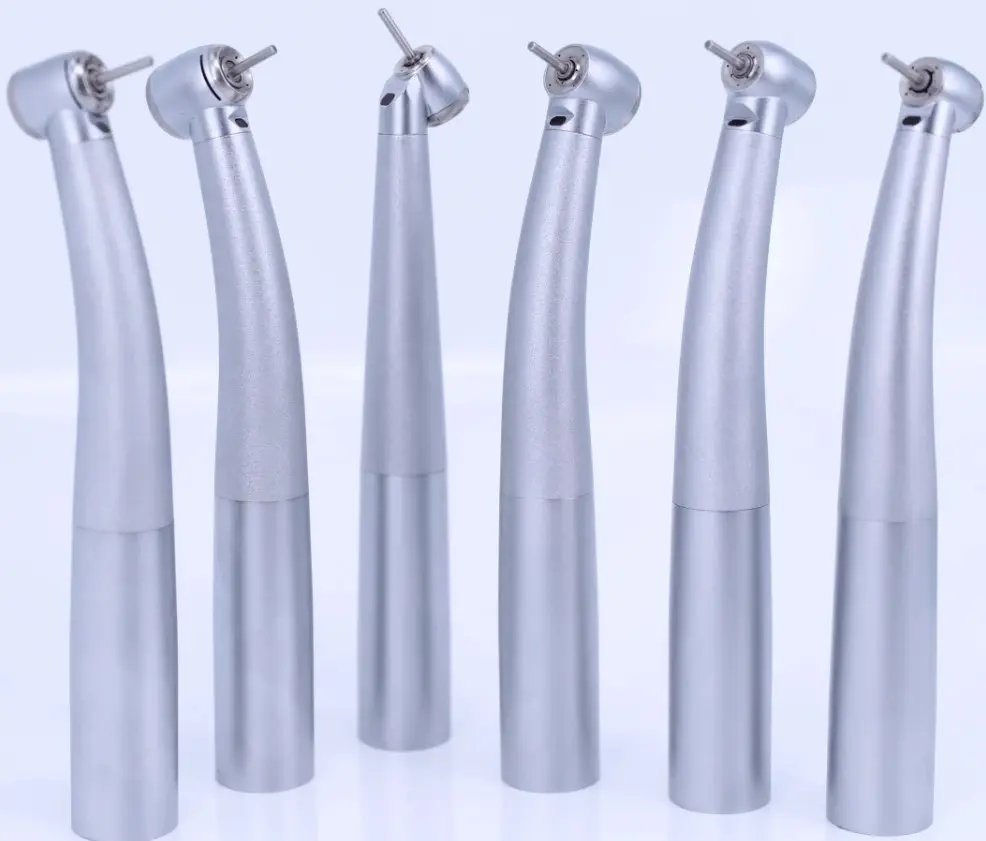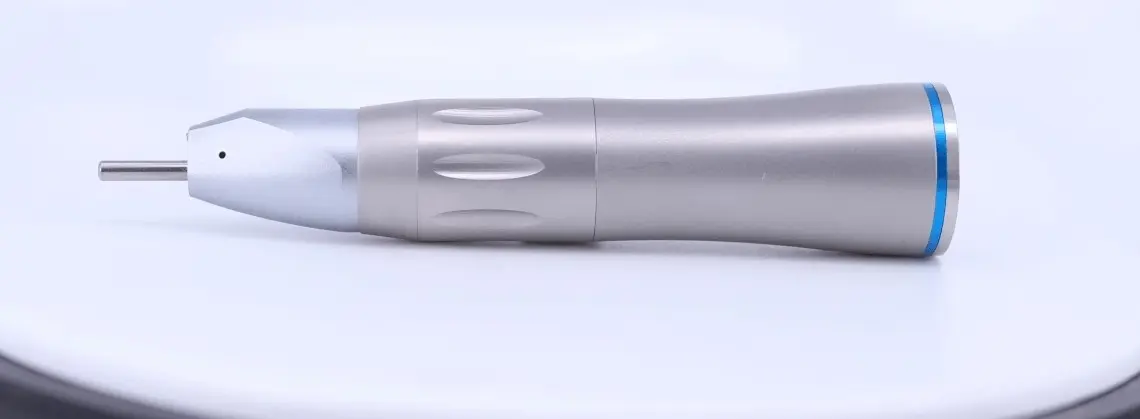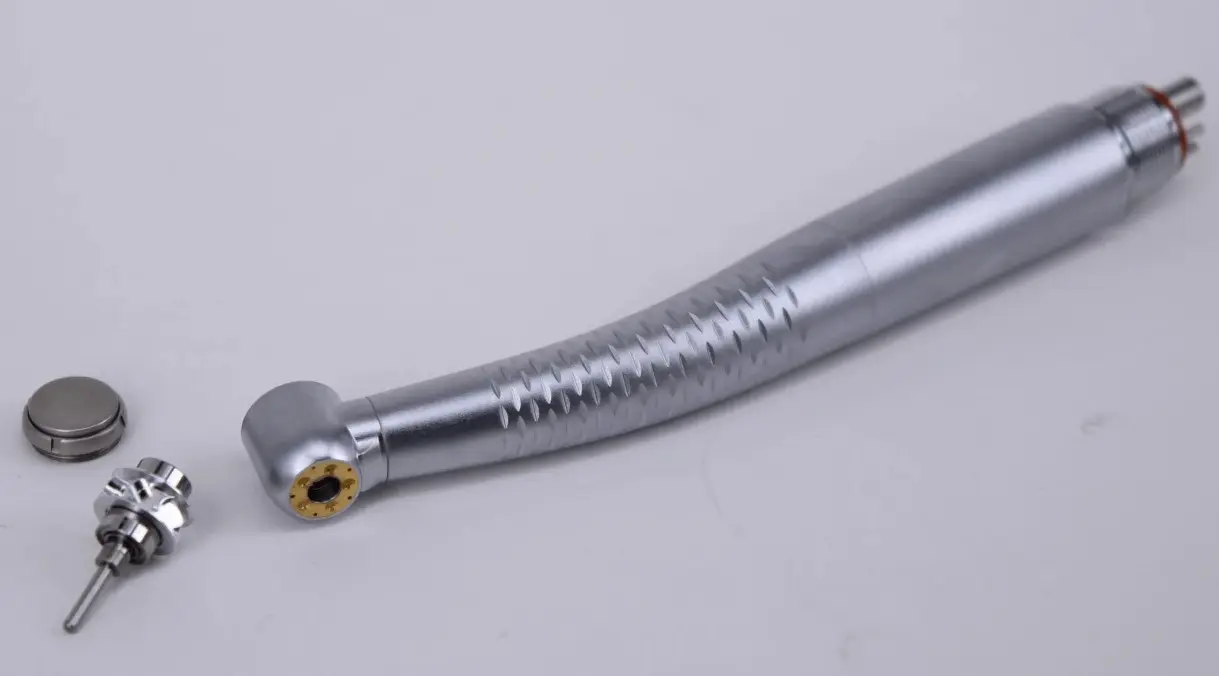High Speed Vs Slow Speed Handpieces: What Are The Differences?
Dental handpieces are essential tools that form the backbone of modern dental practices. With high-speed and low-speed options representing the two primary categories, selecting the right handpiece can significantly impact procedure efficiency, patient comfort, and treatment outcomes. High-speed handpieces operating at up to 400,000 RPM excel at rapid cutting tasks, while low-speed handpieces (5,000-40,000 RPM) offer superior control for precision work. This comprehensive guide examines the critical differences between these dental instruments and provides expert recommendations to help you make informed equipment decisions for your dental practice.
What Are Dental Handpieces?
Dental handpieces are handheld instruments that connect to an air-driven or electric motor to deliver rotational motion to dental attachments. They are essential in procedures like cavity preparation, crown placement, and root canal treatments. Modern handpieces are engineered for maximum precision, efficiency, and patient comfort, making them an essential component of any dental office.
| Feature | High-Speed Handpieces | Low-Speed Handpieces |
|---|---|---|
| RPM Range | 200,000-400,000 RPM | 5,000-40,000 RPM |
| Primary Uses | Cavity preparation, crown reduction, finishing restorations | Endodontic procedures, polishing, prophylaxis |
| Precision Level | High cutting efficiency | Superior control for detailed work |
| Heat Generation | Higher (requires water cooling) | Lower (reduced risk of thermal damage) |
| Noise Level | Higher | Lower |
| Ideal Applications | Restorative procedures, rapid cutting | Endodontic work, finishing, polishing |
| Weight | Typically lighter | Generally heavier |
| Cost Range | $500-$1,500+ | $300-$1,000+ |
High Speed Handpieces: Features And Benefits
High speed handpieces are a cornerstone of modern dental practices, providing numerous features and benefits that contribute to efficient and effective dental procedures.
Lightweight And Ergonomic Design
High speed handpieces are designed with the dentist's comfort in mind. They are typically lightweight and ergonomically shaped, allowing for easy maneuverability during procedures. The ergonomic grip prevents hand fatigue, allowing dentists to complete lengthy treatments without pain.
Rapid Material Removal
One of the primary advantages of high speed handpieces is their ability to swiftly remove dental materials. The small-sized bur rotates at high RPMs, enabling quick and efficient cutting of enamel, dentin, and other dental substances. This equates to less chair time for patients, which leads to increased productivity and patient satisfaction.
Versatility With Attachments
High speed handpieces come with a variety of attachments, such as diamond burs, carbide burs, and polishing cups, making them versatile for different dental tasks. Dentists may effortlessly swap between attachments to execute different operations, reducing the need for several handpieces for specific jobs.
Time-Saving In Restorative Procedures
In restorative dentistry, high speed handpieces shine brightly. They excel in tasks like cavity preparation, crown and bridge work, and veneer placement. Dentists can accomplish restorative operations faster thanks to its rapid cutting efficiency, improving patient comfort and minimizing time spent in the dental chair.
Enhanced Visibility
High speed handpieces often feature excellent illumination systems. The bright LED lights integrated into the handpiece help dentists visualize the treatment area clearly, even in hard-to-reach spots. This improved vision enhances precision and assures exact treatment outcomes throughout dental operations.

Slow Speed Handpieces: Features And Advantages
Slow speed handpieces are invaluable companions for intricate and delicate dental work, offering distinctive features and advantages that cater to specialized procedures.
Optimal Precision And Control
Slow speed handpieces operate at lower RPMs, providing dentists with better precision and control. These handpieces are perfect for precise detailing activities such as polishing dental restorations, finishing surfaces, and adjusting crowns or bridges. The slower rotation allows dentists to make precise adjustments with ease.
Reduced Heat Generation
One of the significant benefits of slow speed handpieces is their ability to generate less heat during dental procedures. Lowering the RPM reduces friction and heat accumulation, lowering the danger of thermal injury to tooth tissues. Slow speed handpieces are therefore ideal for treatments involving sensitive regions.
Smooth And Quiet Operation
Slow speed handpieces operate with a smooth and gentle motion, resulting in minimal vibrations and noise. This makes treatments more comfortable for both the dentist and the patient, providing a peaceful and stress-free environment in the dental office.
Ideal For Polishing And Finishing
Polishing and finishing procedures require attention to detail and a light touch. Slow speed handpieces are appropriate for such activities because they enable dentists to obtain a high-quality finish on dental restorations, crowns, and other prosthetic work.
Versatility With Attachments
Similar to high speed handpieces, slow speed handpieces also come with a range of attachments to cater to various dental procedures. From polishing cups and prophy angles to latch-type and friction grip burs, these handpieces can adapt to different clinical needs with ease.

Friction Grip Slow Speed Handpiece
Browse our complete low-speed handpiece range designed for optimal precision and control.
Comparing High-Speed and Low-Speed Dental Handpieces
Understanding the Key Differences
When comparing high-speed and low-speed dental handpieces, the primary distinction lies in their operational speeds, measured in revolutions per minute (RPM). High-speed handpieces are remarkable for their ability to reach up to 400,000 RPM, enabling rapid removal of hard dental tissues during procedures such as cavity preparation or crown reduction. Conversely, slow-speed handpieces operate within a range of 5,000 to 40,000 RPM, which is ideal for precision tasks like shaping, polishing, or cleaning.
Specific Applications and Procedures
The choice between high-speed and low-speed handpieces often depends on the dental procedure at hand. High-speed handpieces are the go-to for aggressive cutting and shaping, playing a vital role in restorative and surgical applications. In contrast, low-speed handpieces are preferred for procedures requiring finesse and delicate handling, such as endodontic work, prophylaxis, and finishing restorations.
Efficiency in Dental Material Removal
With their high RPM capabilities and specialized bur designs, high-speed handpieces offer exceptional cutting power, significantly reducing the time needed for removing dental structures. This efficiency is not only beneficial for the dentist's workflow but also enhances patient comfort by shortening the duration of the procedure. Slow-speed handpieces, while not as fast, provide a level of control that is crucial for detailed and fine work, ensuring the integrity of the dental work.
Thermal Management During Operations
Heat generation is an important consideration in dental procedures. High-speed handpieces, due to their velocity, can produce more heat, which necessitates the use of water spray for cooling to prevent potential damage to the pulp. Low-speed handpieces are less likely to cause thermal issues due to their slower speeds, reducing the risk of patient discomfort and tissue damage.
Ergonomic Design for Optimal Handling
Both high-speed and low-speed handpieces are designed with ergonomics in mind. High-speed handpieces are often lightweight, minimizing hand fatigue and enabling easier manipulation during lengthy procedures. Low-speed handpieces also boast ergonomic features that provide dentists with the control necessary for precision work without compromising comfort.

Portable Electric Dental Handpiece
Maintenance Differences Between High-Speed and Low-Speed Handpieces
Proper maintenance is crucial for extending the lifespan and ensuring the optimal performance of your dental handpieces. However, maintenance requirements differ significantly between high-speed and low-speed models.
High-Speed Handpiece Maintenance
High-speed handpieces require more frequent maintenance due to their intricate turbine mechanisms and higher operational stresses. Daily lubrication is essential, with manufacturers typically recommending lubrication after each sterilization cycle. The turbine, which can reach speeds of up to 400,000 RPM, may need replacement every 9-12 months depending on usage patterns and maintenance adherence.
Key maintenance procedures include: - Thorough cleaning after each patient - Regular lubrication with dental-specific lubricants - Proper sterilization following manufacturer guidelines - Periodic pressure and water spray testing - Regular inspection for wear on bearings and turbines
Low-Speed Handpiece Maintenance
Low-speed handpieces generally have simpler mechanisms and encounter less operational stress, resulting in lower maintenance requirements. Their geared systems typically require lubrication after every 8-10 sterilization cycles, and with proper care, internal components may last significantly longer than their high-speed counterparts.
Essential maintenance includes: - Cleaning and removing debris after procedures - Less frequent but consistent lubrication - Proper sterilization according to manufacturer specifications - Regular inspection of attachments and gearing systems - Periodic testing for smooth operation and adequate torque
Preventative Maintenance Schedule
Implementing a standardized maintenance schedule for both types of handpieces can prevent costly repairs and extend equipment lifespan:
- Daily: Basic cleaning and lubrication as needed
- Weekly: Thorough inspection and performance testing
- Monthly: Comprehensive cleaning of all components
- Quarterly: Professional servicing and calibration recommended
Conclusion
Selecting between high-speed and low-speed dental handpieces requires a nuanced understanding of each instrument's capabilities and limitations. While high-speed handpieces excel in efficiency and cutting power for restorative procedures, low-speed handpieces offer unmatched precision and control for detailed work. Most dental practices benefit from investing in both types to handle the full spectrum of treatment needs.
HAGER's comprehensive range of both high-speed and low-speed handpieces features the latest ergonomic designs, cutting-edge materials, and innovative technologies to enhance your clinical performance. Our dental experts are available to provide personalized recommendations based on your specific practice requirements.
Contact our team today for a consultation or browse our complete dental handpiece collection to find the perfect balance of speed, precision, and reliability for your dental practice.

